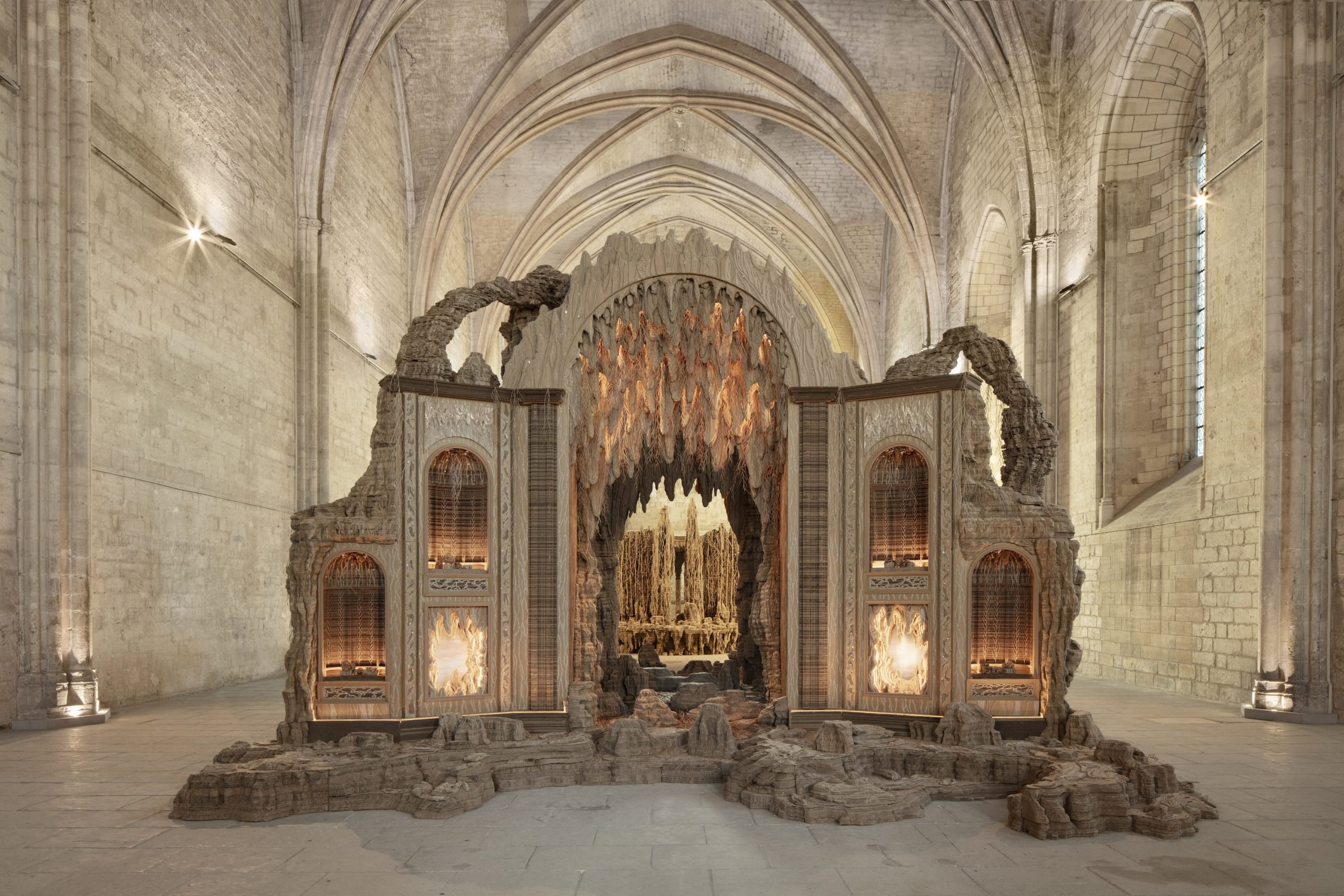
“What is happening underground? What do these unseen realms stoking our imaginations really look like?” These are some of the questions that Louvre-Lens’s exhibition, “Subterranean World: 20,000 Leagues Under The Earth,” is asking its visitors.
More than 200 objects are on display, including works by Alphonse Mucha, Odilon Redon, and Edward Burne-Jones, as well as precious stones and fossils in a cabinet of curiosities. Jean-Jacques Caffieri’s 1759 statue The Erythraean Sybil welcomes visitors. The sybil—whose name means prophetess—is an apt guide for the underground world, as she was said to have predicted both the Trojan War and the coming of Christ.
Jean-Jacques Caffieri, La Sibylle d’Erythrée (1759). © RMN-Grand Palais (musée du Louvre) & Hervé Lewandowski.
Many mythological figures and ancient fables are explored in the exhibition, from the earthquakes that the ancient Greeks believed were caused by Titans buried underground by Zeus to the Roman god Vulcan, who was said to have buried the giant Mimas beneath Mount Vesuvius, ultimately sealing the fate of the city of Pompeii.
Jean Arp, Déméter (1961). © ADAGP, Paris 2024.
It wasn’t until the 18th century that scholars began to explore what truly lay underneath the Earth’s surface. Previous hypotheses included that the center of the world was empty, that it was filled with water, or that it was the location of an underworld where damned souls went after death. The exhibition explores the dark associations we have with what goes on beneath our feet: falling into the abyss, monsters lurking in the depths, and being buried alive.
Alphonse Mucha, Le Gouffre (1898) © RMN-Grand Palais (musée d’Orsay) & Hervé Lewandowski
Far from being entirely nightmarish, “Subterranean Worlds” also looks at the underground as a place where we can seek peace and solace, as is the case with the numerous underground cities around the world, and also the practicalities of making the most of underground space for planning commuter routes and dwellings for an ever-growing population.
Un mineur (1914). © Centre Historique Minier.
A major cardboard installation by Eva Jospin examines the beauty of caves as portals between one realm and the next. The exhibition features a library section and cinema area for visitors to read and watch story interpretations of the world beneath our feet.
Joseph Franque, Hercule arrachant Alceste des Enfers (1806). © Musée de Valence & Béatrice Roussel.
The exhibition is also partly inspired by the history of the Hauts-de-France region’s industrial coal mining past and examines the fertility of the earth beneath us. One section of the show explores the concept of Mother Earth, a primordial goddess who rules over the planet. Mother goddesses throughout history have included the Norse goddess Freyja, the Hindu goddess Durga, and the ancient Greek Demeter, the mother of Persephone, who casts the world into winter when her daughter is summoned for half the year to the underworld.
Jean-Francis Auburtin, Chants sur l’eau (1912). © Paris Musées Petit Palais, musée des Beaux-Arts de la Ville de Paris.
“Subterranean Worlds: 20,000 Leagues Under Earth” is on view at Louvre-Lens, 99 Rue Paul Bert, Lens, France, through July 22.